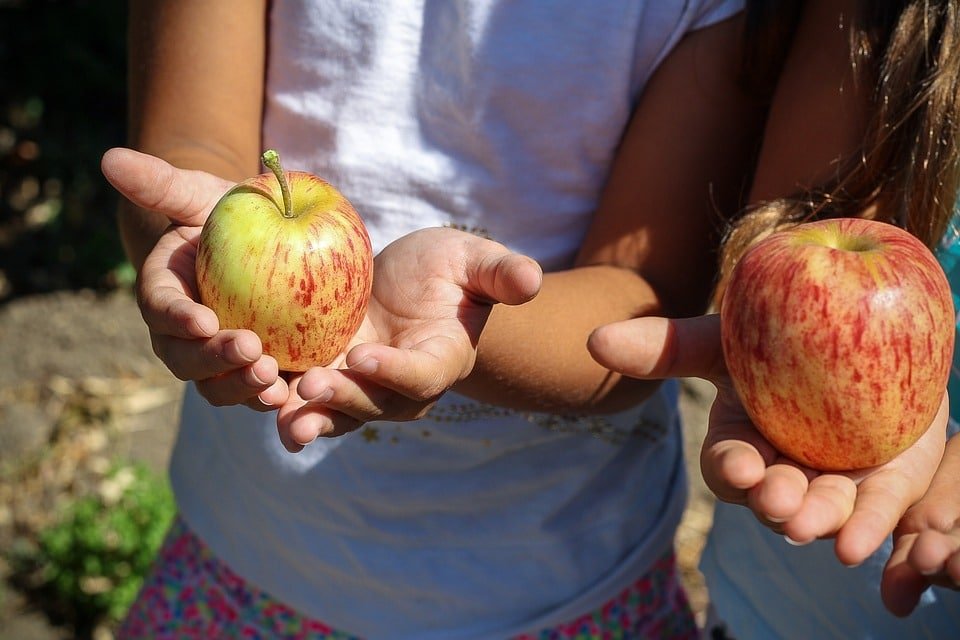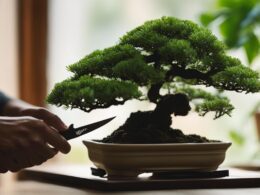Caterpillar Diets
You’ll find that these tiny critters munch on various plant matter, like leaves and flowers, depending on their species and region. Caterpillars primarily survive on a diet of plant matter, enjoying the leaves, flowers, and grasses that surround them. Some species are quite picky about their food, only eating specific types of plants, while others have a broader palate, allowing them to take advantage of a variety of plant matter in their environment. Understanding caterpillar diets is essential for providing a safe and nourishing environment for these fascinating creatures. If you’re interested in attracting butterflies to your garden, for example, it’s crucial to include their preferred host plants, as this is where they will lay their eggs and where the hungy caterpillars will find their food. Monarch caterpillars, for instance, have a strong preference for milkweed, while Black Swallowtail caterpillars enjoy parsley and common rue. So, when pondering the question of what do caterpillars eat, remember that it varies greatly depending on the species and region. By providing a diverse selection of plant matter in your garden or outdoor space, you can potentially invite a variety of caterpillars and, eventually, butterflies to share your space. Enjoy the beauty of nature, and take comfort in knowing that you’re providing a safe haven for these fascinating creatures and their unique dietary needs.Host Plant Selection
Selecting the right host plants is crucial for ensuring a caterpillar’s survival, as they’re quite picky about their food source and often stick to specific plants native to their region. Offering multiple plants from the same host group is a good idea since it increases the chances of attracting a butterfly to lay its eggs in your garden. Remember, each butterfly species has its preferences when it comes to host plants, so do your research to find out which ones are best suited for the caterpillars you want to attract. Here are some popular butterfly species and their preferred host plants: Monarch caterpillars: These popular butterflies have a strong preference for milkweed, with purple milkweed being a current favorite. Adding milkweed to your garden not only provides a reliable food source for Monarch caterpillars but also serves as a popular nectar plant for adult butterflies. Black Swallowtail caterpillars: Parsley and common rue are favorites for Black Swallowtail caterpillars. Both plants are easy to grow and maintain, with common rue being a well-behaved perennial that makes it an ideal choice for gardens. Zebra Longwing caterpillars: These distinctive butterflies are attracted to the soft spikes of the Zebra Longwing caterpillar. Soil type and pH can affect host plant preferences, so it’s essential to take these factors into account when selecting plants for your garden. Eastern Tiger Swallowtail caterpillars: Tulip trees and wild thyme are popular among Eastern Tiger Swallowtail and hairstreak caterpillars. These plants provide a good source of caterpillar food and also add an attractive element to your garden space. By carefully considering host plant selection and providing a variety of caterpillar food sources, you’ll create a safe haven for these fascinating creatures in your garden. Not only will you help support their survival, but you’ll also have the unique opportunity to witness the butterfly life cycle right in your own backyard. So go ahead, get planting, and enjoy the beautiful process of transformation that caterpillars and butterflies bring to your garden.Regional Variations
It’s important to keep in mind that regional variations play a significant role in the types of plants preferred by caterpillars, so you’ll want to choose host plants that are native to your area for the best results. These regional variations in caterpillar feeding preferences are often due to differences in climate, soil type, and plant species. By focusing on native plants, you’ll not only be providing a suitable food source for caterpillars but also contributing to the overall health and biodiversity of your local ecosystem. When selecting host plants for your garden, consider the specific needs of the caterpillars you want to attract. Some species may require a particular food plant that is unique to their region, while others may have a more diverse diet. Research the types of butterflies and moths native to your area and the plants they rely on. This will help you create a garden that is both welcoming and nourishing for caterpillars, while also ensuring their survival and growth. By understanding the regional variations in caterpillar feeding preferences and selecting appropriate host plants, you can create a safe and thriving environment for these fascinating creatures. Remember, the key is to choose native plants that cater to the specific needs of the caterpillars in your region. With a little research and planning, your garden can become a haven for these remarkable insects and a place where you can witness the magical transformation from caterpillar to butterfly. So, don’t wait any longer – start planning your caterpillar-friendly garden today!Monarch Caterpillar Preferences
When it comes to Monarch caterpillar preferences, they’re quite specific about their diet, so let’s dive into what plants they love to munch on! Monarch caterpillars have a strong preference for milkweed plants, which serve as their primary source of food and also as caterpillar host plants. There are over 100 species of milkweed plants, and while Monarchs will feed on many of them, some species are more favored than others. In North America, common milkweed (Asclepias syriaca) and swamp milkweed (Asclepias incarnata) are among the top choices for Monarch caterpillars. These plants provide the necessary nutrients for the caterpillars to grow and develop into healthy butterflies. It’s important to note that the availability of milkweed plants is crucial for the survival of Monarch caterpillars, as they will not thrive on other types of plants. By planting milkweed in your garden or yard, you can help support the Monarch caterpillar population and contribute to their conservation. Not only will you be providing a safe and nutritious food source for these fascinating creatures, but you’ll also have the opportunity to witness the amazing transformation from caterpillar to butterfly right in your own backyard. So, go ahead and add some milkweed plants to your garden, and watch as the Monarch caterpillars happily munch away!Unique Life Cycles
You’ll be amazed by the unique life cycles of these fascinating creatures, as they munch on various plants and eventually transform into beautiful butterflies or moths. Each caterpillar species has its own host plant that it feeds on, and this close relationship between caterpillar and plant ensures the survival of both. As you create a safe haven for these creatures in your garden, you’ll be providing a vital resource for the continuation of their unique life cycles. In addition to the host plants they rely on for nourishment, some caterpillar species have developed fascinating relationships with other insects, such as red ants. These caterpillars secrete a sweet substance that attracts ants, who in turn protect the caterpillar from predators. As you learn more about these incredible creatures and their host plants, you’ll gain a deeper appreciation for the intricate web of life that surrounds us. By incorporating a variety of host plants in your garden, you’ll be supporting the unique life cycles of various caterpillar species, and in turn, the beautiful butterflies and moths they become. The more you learn about these amazing creatures, the more you’ll want to create a safe and nurturing environment for them to thrive. So go ahead and plant those milkweeds, parsley, and common rue, and watch as your garden becomes a haven for these enchanting insects and their extraordinary transformations.Infestation Solutions
Discovering an infestation of caterpillars in your garden can be frustrating, but don’t worry – there are effective and safe ways to manage them and keep your plants healthy. The key is to address the problem early on and use methods that won’t harm your plants or other beneficial insects. Remember, caterpillars are an essential part of the ecosystem, so finding the right balance between protecting your plants and supporting their natural life cycle is crucial. Handpicking: One of the simplest infestation solutions is to remove caterpillars from your plants by hand. Wearing gloves, gently pick them off and relocate them to a more suitable area. This method is most effective when there are only a few caterpillars causing a problem. Soap and Neem Oil Spray: Mix a few drops of mild dish soap with water in a spray bottle and add a teaspoon of neem oil. Neem oil is a natural, non-toxic pesticide that is safe for your plants and the environment. Spray the affected plants, making sure to coat the leaves, stems, and any visible caterpillars. This solution will help deter caterpillars from returning and prevent new infestations. Introducing Natural Predators: Encourage birds, spiders, and other beneficial insects that prey on caterpillars to visit your garden. Providing birdhouses, water sources, and a diverse range of plants will create a welcoming environment for these natural predators, helping to keep the caterpillar population in check. By implementing these infestation solutions, you can effectively manage caterpillars and protect your plants without resorting to harmful chemicals. Remember to keep an eye on your garden regularly to spot any potential issues early on and maintain the delicate balance between your plants and the critters that rely on them. With a little effort and patience, you can enjoy a thriving, healthy garden that supports the beautiful life cycle of butterflies and moths.Butterfly Connections
In the world of butterflies, you’ll find an incredible array of connections between these beautiful creatures and the plants they rely on for survival, creating a vibrant, colorful dance in your garden. The butterfly connections start when female butterflies lay their eggs on host plants, which provide food for the emerging caterpillars. Once the caterpillars grow and transform into butterflies, they rely on nectar plants for sustenance, and the cycle begins anew.| Butterfly Species | Host Plant for Caterpillars | Nectar Plant for Butterflies |
|---|---|---|
| Monarch | Milkweed | Purple Milkweed |
| Black Swallowtail | Parsley, Common Rue | Milkweed, Coneflower |
| Eastern Tiger Swallowtail | Tulip Trees, Wild Thyme | Wild Thyme, Butterfly Bush |
Specific Species Examples
Let’s dive into some specific examples of caterpillar species and their preferred host plants, creating a lively and thriving garden party! By understanding the eating preferences of these caterpillars, you can ensure a safe environment for them to grow and develop while also creating a beautiful garden for you and your family to enjoy. Brown meadow caterpillars love to feast on wild grasses. By incorporating various native grasses into your garden, you provide a safe haven for these little ones to munch on and grow. Giant swallowtail butterflies prefer dining on prickly ash. Planting a few prickly ash trees or shrubs in your garden will not only attract these beautiful butterflies but also provide their caterpillars with their favorite food source. Eastern tiger swallowtail and hairstreak caterpillars have a preference for tulip trees and wild thyme. By adding these plants to your garden, you create a delightful sanctuary for these caterpillars to thrive. Rosy Marbled Moth caterpillars are omnivorous creatures that eat both flower petals and insects. Plant a variety of flowering plants to keep them well-fed and happy. With these specific species examples in mind, you can create a garden that not only looks beautiful, but also provides a safe and nurturing environment for caterpillars to eat and grow. By choosing the right host plants for these caterpillars, you can enjoy the incredible experience of witnessing the entire life cycle of butterflies and moths, from egg to adult, right in your own backyard. So, go ahead and start planning your caterpillar-friendly garden and enjoy the magic and beauty of nature that will unfold before your eyes.Do Caterpillars Dislike Coffee Grounds as a Food Source?
Caterpillars are known to have varied tastes, but surprisingly, vegetables that dislike coffee grounds as a food source do exist. Some studies suggest that coffee grounds can negatively impact caterpillars’ growth and development. While coffee grounds are beneficial for plants in certain ways, it’s important to bear in mind their potential effects on specific species.









